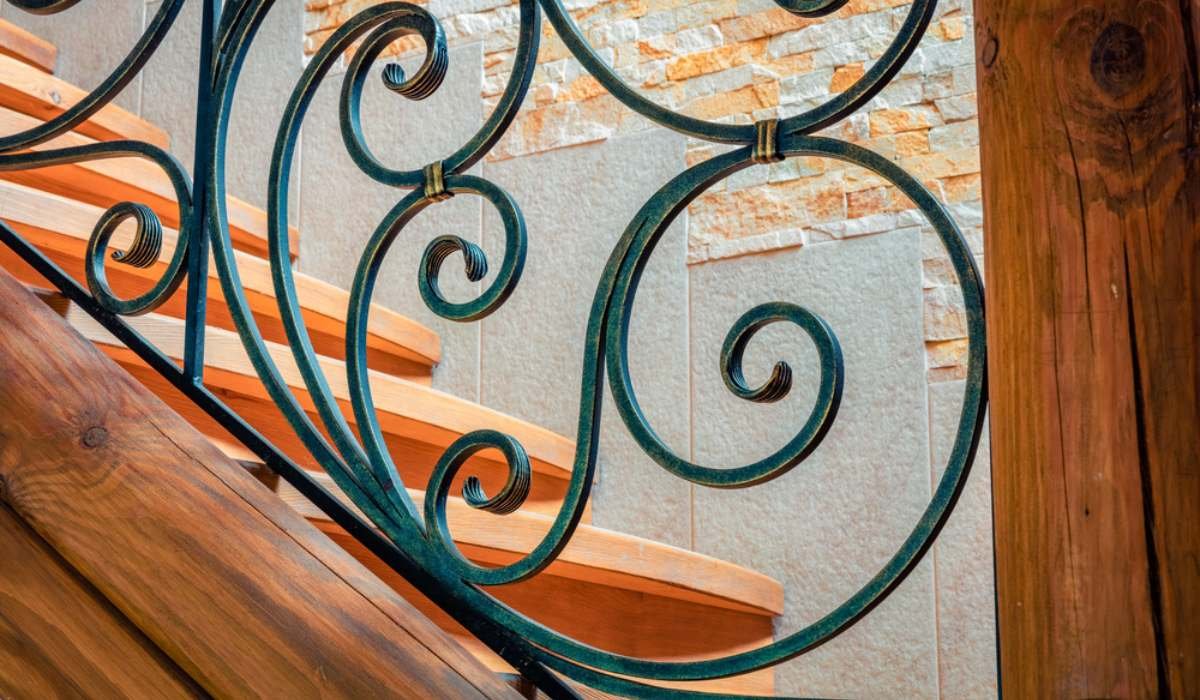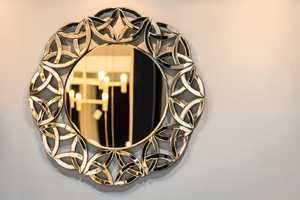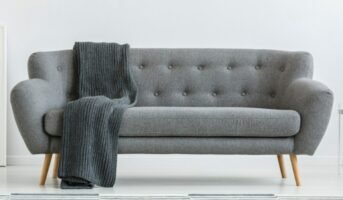Iron railing design is an important aspect of home decor, as it adds a touch of elegance and sophistication to any space. These railings are typically made from wrought iron, a strong and durable material that can withstand the elements and last for many years. Iron railings can be used for indoor and outdoor spaces and come in various designs, styles, and finishes. For example, it can be used in multiple settings, including staircases, balconies, and porches, to add a touch of character and charm to a home.
They can also be customised to match any decor style, from traditional to modern, making them a versatile design element. Iron railings can also provide added safety and security to a home, making them a practical and functional addition to any space.
See also: Steel railing design for home stairs: Elegant design options
Materials used in iron railing design
- Wrought iron: This is the most traditional material used in iron railing design. It is strong, durable, and can be shaped into intricate designs. It is also resistant to rust and corrosion.
- Aluminium: This lightweight metal is commonly used in iron railing design. It is resistant to rust and corrosion, and it is also easy to maintain.
- Cast iron: One of the main advantages of using cast iron in iron railing design is that it is a very versatile material. It can be shaped and moulded into various designs and styles, making it ideal for traditional and modern railing designs.
- Stainless steel: Stainless steel is a popular choice for iron railing design due to its strength, durability, and resistance to rust and corrosion. It is also easy to maintain and can be polished for a sleek, modern look.
8 types of iron railing design
Iron railing designs are a great way to add safety and aesthetic appeal to any home, workplace, or other building. There are many options available to suit your specific needs and preferences, including:
01. Traditional iron railing design
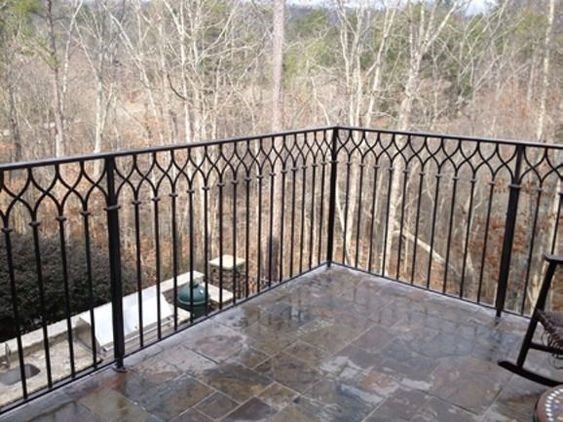
Source: Pinterest
This style features ornate scrollwork and intricate detailing, often with a black or dark finish. It is commonly used in historic homes and buildings, such as Victorian or Gothic architecture.
02. Modern iron railing design
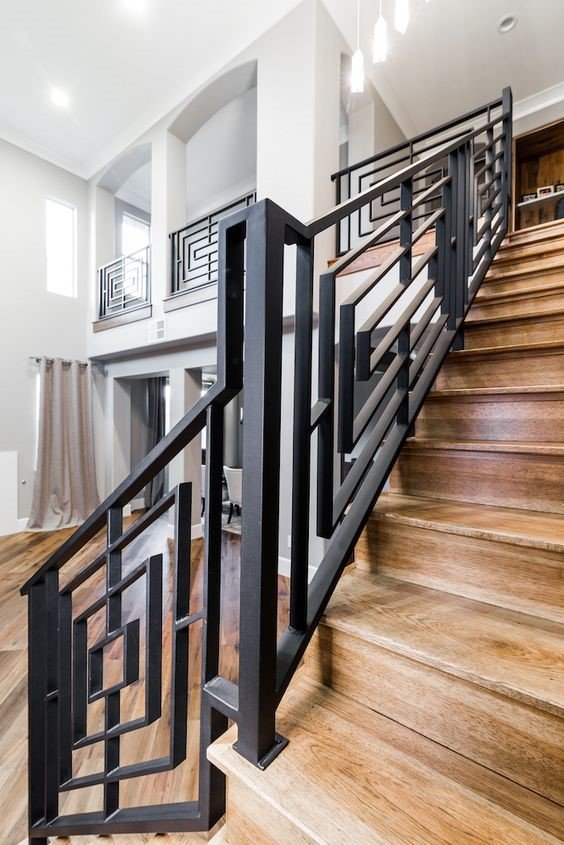
Source: Pinterest
This style is sleek and minimalistic, with clean lines and a simple design. It is often finished in matte black or stainless steel and is perfect for a contemporary home or office building.
03. Simple and modern railing
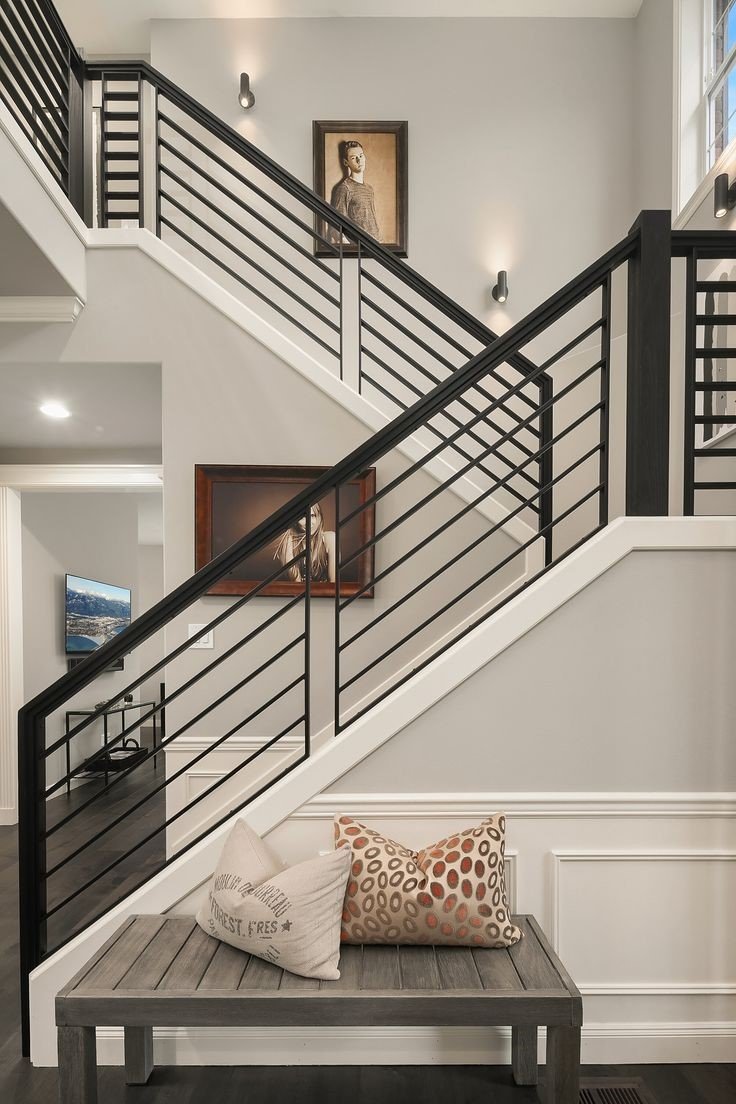
Source: Pinterest
This style has clean lines, minimal ornamentation, and a sleek look, making it an excellent option for contemporary homes and workplaces.
04. Wrought iron railing design

Source: Pinterest
This style is characterised by hand-forged metalwork with a rustic, antique look. It is perfect for outdoor spaces such as decks or patios and can add a touch of vintage charm to any home or building.
05. Glass iron railing design
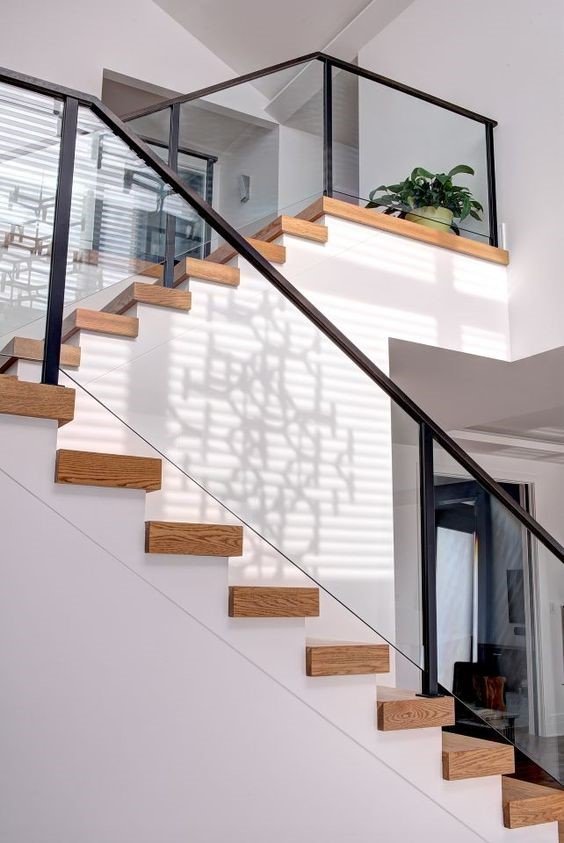
Source: Pinterest
This style features a combination of iron and glass, with a metal frame holding clear or frosted glass panels. It is commonly used in modern homes and workplaces, allowing for an open and airy feel while providing safety and security.
06. Cable iron railing design

Source: Pinterest
This style features thin, stainless steel cables as the main component of the railing that is tensioned between iron posts. It is often used in outdoor spaces such as balconies and decks and provides a minimalist and modern look.
07. Spiral iron railing design

Source: Pinterest
This style features spiral-shaped iron rods that are twisted and bent to create an intricate, sculptural design. It is perfect for indoor spaces such as staircases or balconies and can add a touch of artistic flair to any home or building.
08. Artistic iron railing design
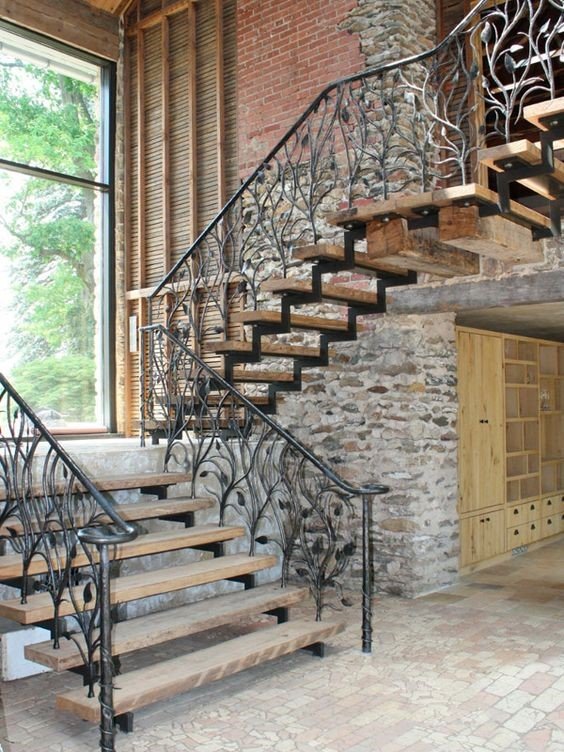
Source: Pinterest
This style features unique and artistic designs, such as sculptures or abstract shapes. It can add a unique and artistic touch to any space and is often used in museums, galleries, and other artistic spaces.
Advantages of iron railing design
The iron railing design has several advantages, including:
- Durability: Iron railings are strong and can withstand heavy use and exposure to the elements without rusting or deteriorating.
- Aesthetics: Iron railings offer a classic, elegant look that can complement any architectural style.
- Customisable: Iron railings can be customised to fit any space and can be designed to fit any aesthetic preference.
- Low maintenance: Iron railings require minimal maintenance, typically just a coat of paint or rust inhibitor every few years.
- Versatility: Iron railings can be used for both indoor and outdoor applications, such as staircases, balconies, and porches.
- Safety: Iron railing can provide a secure barrier to prevent falls.
- Value: Iron railings can add value to a home or building in terms of aesthetic appeal and safety.
Tips for maintaining iron railings
Iron railings require regular maintenance to prevent rust and corrosion. Here are a few tips for maintaining iron railings:
- Keep them clean: Regularly wipe down iron railings with a damp cloth to remove dirt and debris.
- Apply a rust inhibitor: Use a rust inhibitor or paint that contains a rust inhibitor to help prevent rust from forming.
- Address rust as soon as it appears: If you notice rust on your iron railings, remove it as quickly as possible using a wire brush or sandpaper. Then, apply a rust inhibitor or paint.
- Use a protective coating: Apply a clear coat or wax to the iron railings to protect them from the elements.
- Regularly inspect the railings: Check your iron railings regularly for signs of rust or corrosion, and address any issues as soon as they appear.
- Consider professional maintenance: Hire a professional to sandblast, prime, and paint if severe rust occurs.
It is important to note that iron railings will rust over time and may require more frequent maintenance in areas with high humidity or salt air.
FAQs
What are the most common materials used for iron railing design?
Wrought iron and steel are the most common materials used for iron railing design.
Can iron railings be painted?
Yes, iron railings can be painted, but it is essential to use a primer and paint specifically designed for metal surfaces.
How do wrought iron and steel railings differ from one another?
Wrought iron is a traditional hand-forged material with a decorative, ornate appearance. Steel railings are more modern and are made from a combination of iron and carbon. Steel is stronger and more durable than wrought iron.
Can iron railings be customised to fit my specific design needs?
Yes, iron railings can be customised to fit various design needs, such as different shapes, patterns, and finishes.
How much does it cost to install iron railings?
The cost of installing iron railings can vary depending on the project's design, size, and location. It is typically more expensive than other materials like wood or aluminium, but it can also be durable and last longer.
Housing News Desk is the news desk of leading online real estate portal, Housing.com. Housing News Desk focuses on a variety of topics such as real estate laws, taxes, current news, property trends, home loans, rentals, décor, green homes, home improvement, etc. The main objective of the news desk, is to cover the real estate sector from the perspective of providing information that is useful to the end-user.
Facebook: https://www.facebook.com/housing.com/
Twitter: https://twitter.com/Housing
Email: [email protected]
